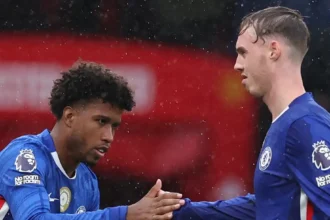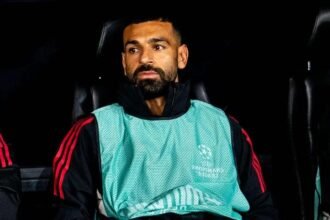The Leagues Cup 2025 has undergone a major revamp aimed at rekindling the fierce MLS vs Liga MX rivalry and boosting its long-term relevance. With 93% of the group phase dedicated to cross-league matchups, this year’s competition promises more excitement and jeopardy. Organizers, led by Thomas Mayo, hope that the new format will create unforgettable storylines, drawing in fans and establishing the tournament as a global fixture within the next decade. Featuring star players like Lionel Messi and Sergio Ramos, the revamped Leagues Cup aims to captivate audiences with its high-stakes, thrilling encounters.
Analysis:
The Leagues Cup — an annual tournament between MLS and Liga MX — has undergone a major overhaul for 2025, with organizers hoping that a revamped format will give the competition the kind of bite it lacked in previous years. After a lackluster performance last year, the tournament has been restructured to put MLS and Liga MX teams head-to-head more often, with the aim of fostering a deeper rivalry and providing more meaningful competition.
Thomas Mayo, formerly a Great Britain 1,500-meter runner and now a sports executive, is one of the driving forces behind this new vision for the Leagues Cup. With a background in building sports brands, Mayo brings a fresh perspective to the competition, likening the Leagues Cup to a startup still in its early stages, with hopes that it will become a major fixture in world soccer within the next decade.
What’s Changed in the Format?
The major change to the 2025 Leagues Cup is the restructuring of the group stage to ensure that Liga MX and MLS teams are pitted against each other as much as possible. In fact, 93% of the group phase will see Liga MX and MLS teams face off, with minimal intra-league games. This increase in cross-league matchups is designed to stoke the long-standing US-Mexico soccer rivalry, which has always been one of the most intense in North America.
Additionally, only the 18 MLS teams that qualified for the playoffs in 2024 will participate in the tournament, while all 18 Liga MX clubs will play. This means every team involved has something to prove and stakes are higher than ever before. Another big change is the introduction of penalty shootouts in the case of a draw, with normal-time winners earning three points and penalty shootout victors earning two.
Rivalry at the Forefront
The driving force behind these changes is the desire to amplify the MLS vs Liga MX rivalry — a battle for supremacy in North America that has often been the cornerstone of this competition. Former MLS All-Star Dax McCarty shared his enthusiasm, explaining that this rivalry is one of the biggest in CONCACAF. For McCarty, the rivalry stems from years of competition between the US and Mexico on the international stage and translates directly into the domestic league competition.
Goalkeeper Matt Freese of NYCFC also weighed in, saying, “This year’s format is an interesting one,” highlighting the tournament’s commitment to ensuring MLS and Liga MX teams face off early, rather than having them play each other only after the group phase.
Impact on Star Power
Star players like Lionel Messi of Inter Miami, Sergio Ramos from Monterrey, and Chucky Lozano from San Diego FC are expected to add further excitement and attract global attention to the event. Mayo, who is tasked with promoting the tournament, acknowledges the importance of star power but emphasizes that the “stories” that unfold during the competition will be what truly keeps fans engaged.
For Mayo, the drama of soccer is what makes the game unforgettable. He shared a memorable anecdote from last year’s Leagues Cup, where a dramatic penalty shootout between Nashville FC and Club America unfolded in a thrilling 99th-minute equalizer. These moments of high drama, Mayo believes, will form the backbone of the competition’s appeal going forward.
The Long-Term Vision
Looking toward the future, Mayo envisions the Leagues Cup becoming a marquee event on the global footballing calendar. “The litmus test will be in 10 years’ time,” he said. “You’ll know in your head when it’s on, what’s happening, who’s won it before… we’ll have all the stats.” He believes that the competition can evolve into something truly global, with strong fan engagement and increasing television audiences.
Mayo points out that the Leagues Cup is still in its infancy, now entering just its third year. With the adjustments made for 2025, he hopes that the tournament can continue to build and eventually become one of the most anticipated events in club football. The potential for future growth is huge, and while the current season is just another step in the journey, it could lay the groundwork for a much more significant and widely recognized event in the years to come.
Challenges Ahead
Despite the structural changes, there are still challenges ahead. For one, Leagues Cup attendance has historically been lower than expected, with some matches last year played in front of sparse crowds. But Mayo remains optimistic, insisting that compelling stories, fierce rivalries, and star players will eventually translate into better fan engagement. He emphasizes that the key is ensuring that the competition delivers exciting football, making it a “must-watch” for both domestic and international audiences.
One of the most pressing concerns for Leagues Cup organizers is overcoming skepticism and building a long-lasting relationship with fans. The event’s future success depends on creating compelling narratives and maintaining the excitement throughout the tournament. It’s no longer just about MLS vs Liga MX; it’s about creating memorable experiences that fans will want to come back to year after year.
Conclusion
The 2025 Leagues Cup represents a critical pivot for what has been, at times, a lackluster competition. With a revamped format that focuses on the MLS vs Liga MX rivalry, added stakes, and an increased emphasis on creating memorable storylines, the competition has the potential to grow into a globally recognized event. While challenges remain, the changes made for 2025 are a promising sign that the Leagues Cup could evolve into a significant fixture in world football. If Mayo’s vision comes to fruition, the competition could indeed become a cornerstone of North American soccer — and perhaps one of the biggest tournaments on the global stage.











